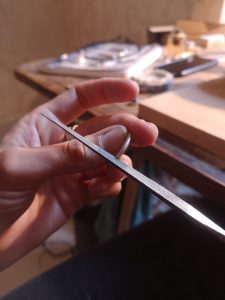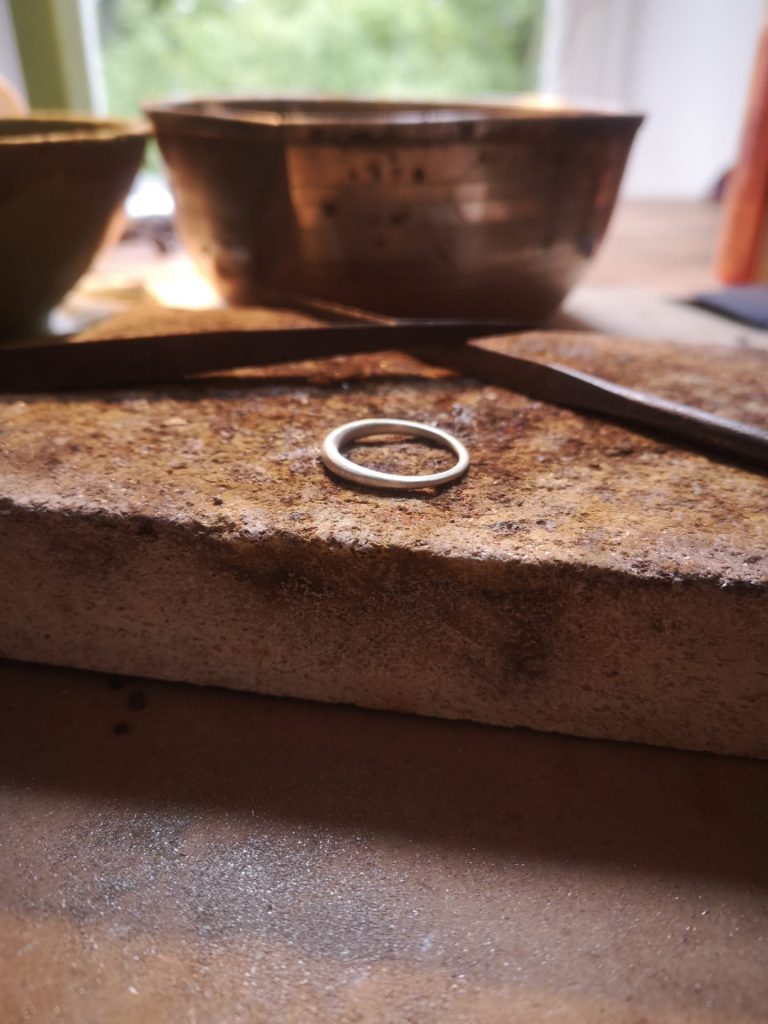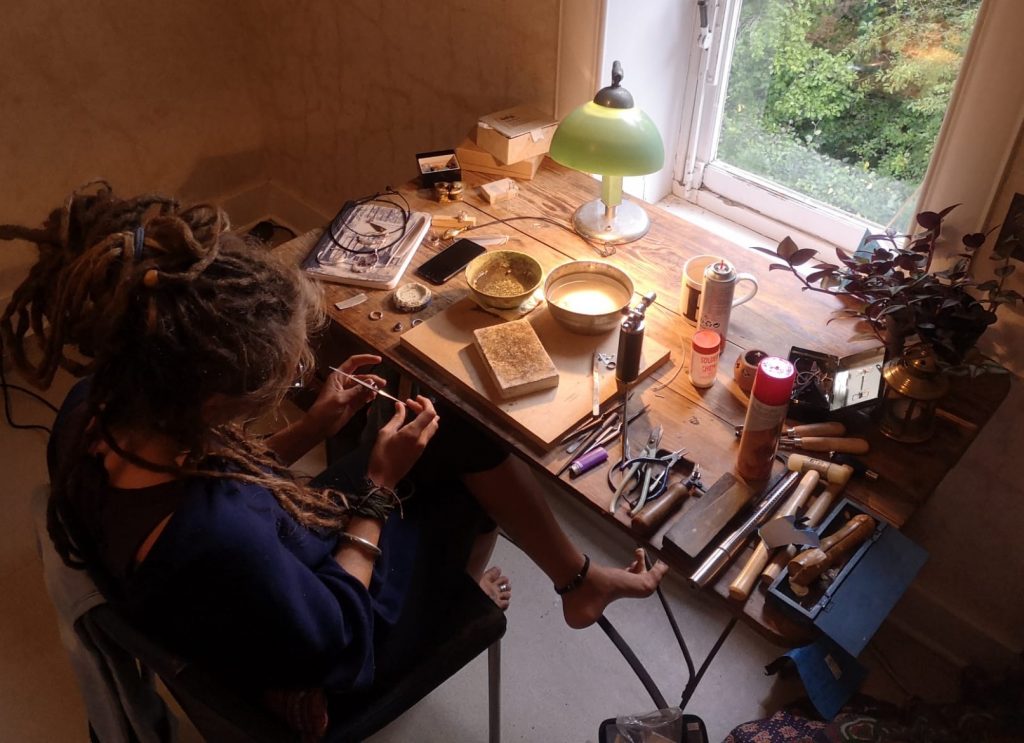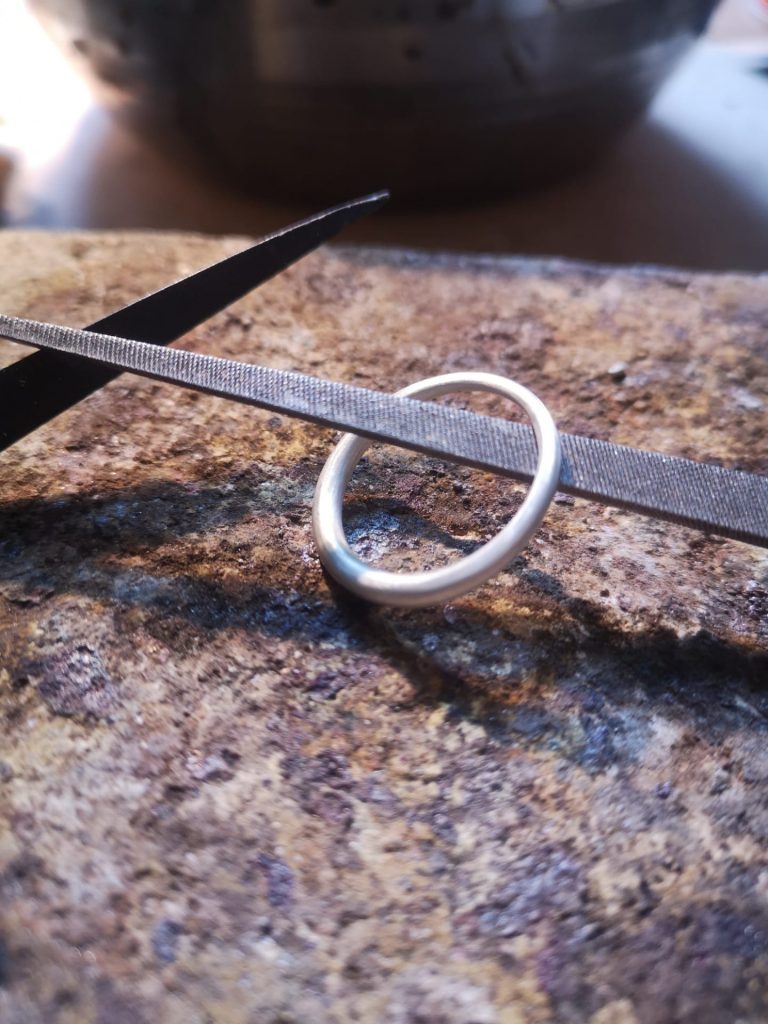Handmade jewellery has a soul
I&V’s jewellery is all handmade. That is why each piece of jewellery will be unique to the wearer, with all rings showing slight variations. This is testament to traditional craftsmanship and we choose this process as it fits with I&V’s philosophy of slow fashion and true luxury.
“The importance of this handmade craft lies in the history of jewellery itself, a connection to our ancestors. To wear a piece and it truly to be one of a kind” – Penny
Fast fashion jewellery: from heirloom to throwaway
With jewellery entering the mass market, the process of making jewellery has dramatically changed. The practice of handcrafting individual pieces has become a rarity, with most jewellery nowadays being made through a process called “casting”.
Casting involves a design being created in a CAD (computer aided design) program and 3D printing this into wax or resin moulds. Jewellery is made by pouring liquid metal into these pre-made moulds. This process has been necessitated by the rapid growth of the jewellery industry process as it allows for economical and more efficient production, plus it ensures all pieces will all be identical. The disadvantage is there is a significant drop in quality and the element of romance connected to a piece of fine jewellery is lost.
“Mass manufactured or cast jewellery is a very different process, there is no life or soul to a piece of jewellery. It is just a ‘pretty thing” – Penny
Handcrafted authenticity

Handmade jewellery nowadays is far less common than cast jewellery. It requires a high level of craftsmanship, is labour and time intensive, and therefore more expensive.
The process begins with raw pieces of silver that come in the form of wire or sheets. The metal is then manipulated by cutting, hammering, shaping and annealing (heating) to create the desired design. Once the metalwork is complete, it is then polished. The maker spends hours with each piece, connecting with it and creating a story.
Traditional methods for minimal environmental footprint
Handmade jewellery is more durable. It has an increased resistance to scratching and bending as the metal is much more dense from being hammered and shaped. Cast jewellery has a higher chance of developing porosity and is about 50% less “hard” than the handmade kind. Handcrafted pieces require less metal than cast jewellery, meaning that silversmiths can do more with less.
Casting pieces of jewellery creates hazardous waste products which are highly toxic to the environment and can have health implications for those working within the industry if not properly controlled. No toxic waste has been created during the making process of our silver jewellery. Penny uses vegan and environmental friendly products and disposes of any waste safely. No animals, humans or rivers have been harmed in the process.
“Each piece will be unique to the wearer, no two will be exactly the same. There are ‘makers marks’ left on handmade jewellery, a map and pathway of the maker leading to the finished product” – Penny
Our recycled handmade jewellery with a soul
Sources
https://www.cooksongold.com/Ecosilver/
https://www.cooksongold.com/home/static.jsp?page=quality-health-safety-environmental-policy
https://aquilajewellery.com/blogs/our-boho-journal/7-interesting-things-you-need-to-know-about-recycled-sterling-silver
https://theecologist.org/2009/mar/01/can-silver-ever-be-ethical




